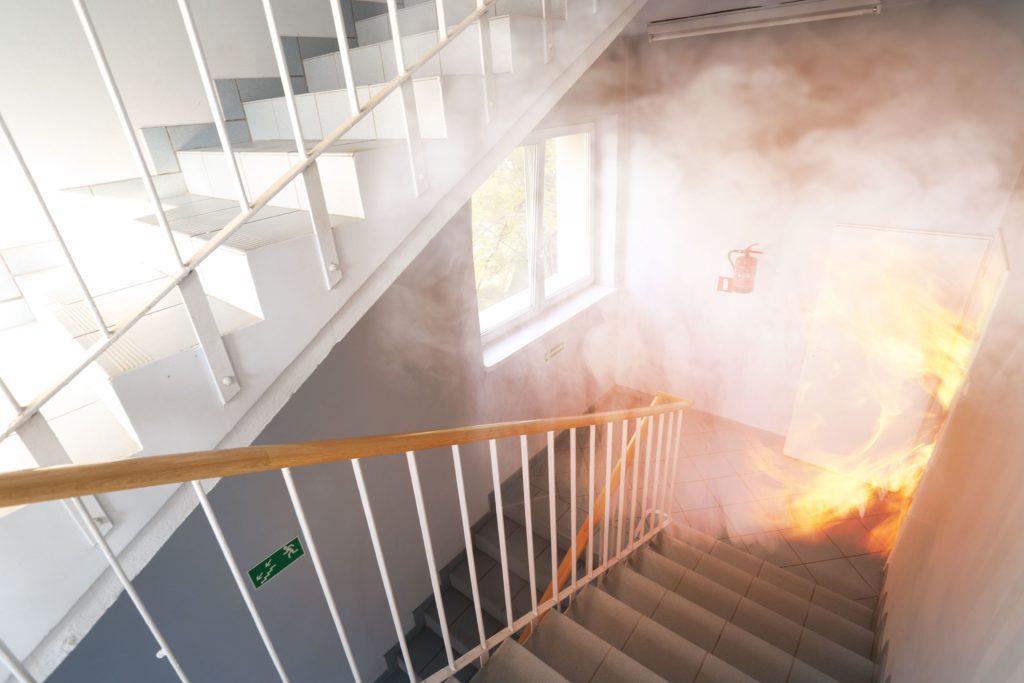
High rise suites can take up a large portion of a floor & many times take up the entire floor. These large suites are usually divided in sections that may have electronically secured doors that partition them. Examples would be data server rooms and file rooms, as well as stairwells and suite entrances from the elevator lobby. Do these doors need to be controlled by the fire alarm system?
Regarding stairwell doors, most are secured on the stairwell side in one manner or another. Card readers, solenoids, magnets and strikes are some of the techniques used to limit access to suites from stairwells. In addition, the stairwell is built to withstand fire and smoke so their doors need to remain closed to keep the life safety rating. However, when a fire situation occurs in the high rise, smoke from a floor below can still get into the stairwell in a number of ways. If the doors remain locked, people can be trapped in a stairwell filling with smoke, so they must be electronically controlled by the fire alarm system if they are normally locked, per NFPA 101 Chap 7.2.1.5.8 & IBC Section 1010.9.1.12. Additionally, they must positively latch when closed per IBC Section 403.5.3. The latching requirement is for high rise stairwell doors only.
Regarding the release of other secured doors within suite, it comes down to their role in egress pathways. Basically, if you can’t get out of a room or space due to a secured door, the door must become unsecured without additional actions like pressing a button, the use of a motion sensor or activating a delayed egress push bar. There are exceptions for specific confinement occupancies and vault type spaces for obvious reasons, but otherwise a person must be able to leave a space that has closed door by opening the door with a single action.
That doesn’t mean all doors have to become unlocked when the fire alarm goes off. The door can remain locked in the direction away from egress if there is a viable way to get out of the building/suite without having to go back through that door. A good example would be a lawyer’s suite entrance. We don’t want to allow entrance to unauthorized people when the occupants can get out without making the entrance unsecured.
Meeting code requirements can be tough when they’re intertwined. Using Gamewell-FCI by Honeywell‘s E3 life safety system, Affiliated Fire Systems has the experience and expertise to stay ahead of the problems caused by the interfacing of building systems. It’s what we do best and is the reason we’re on most contractors bid list. Contact us to get more information and to get quotations for your project.
Gene Rowe, SET
Affiliated Fire Systems, Inc., Distributors of Gamewell-FCI by Honeywell


Send us a Comment